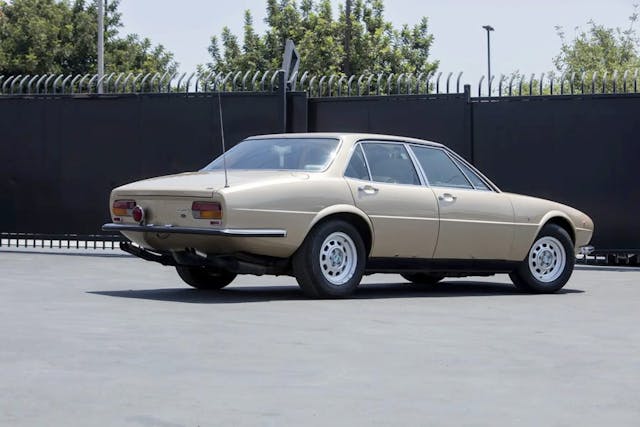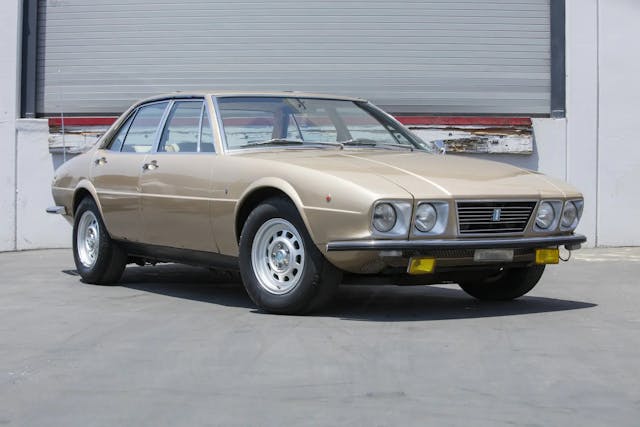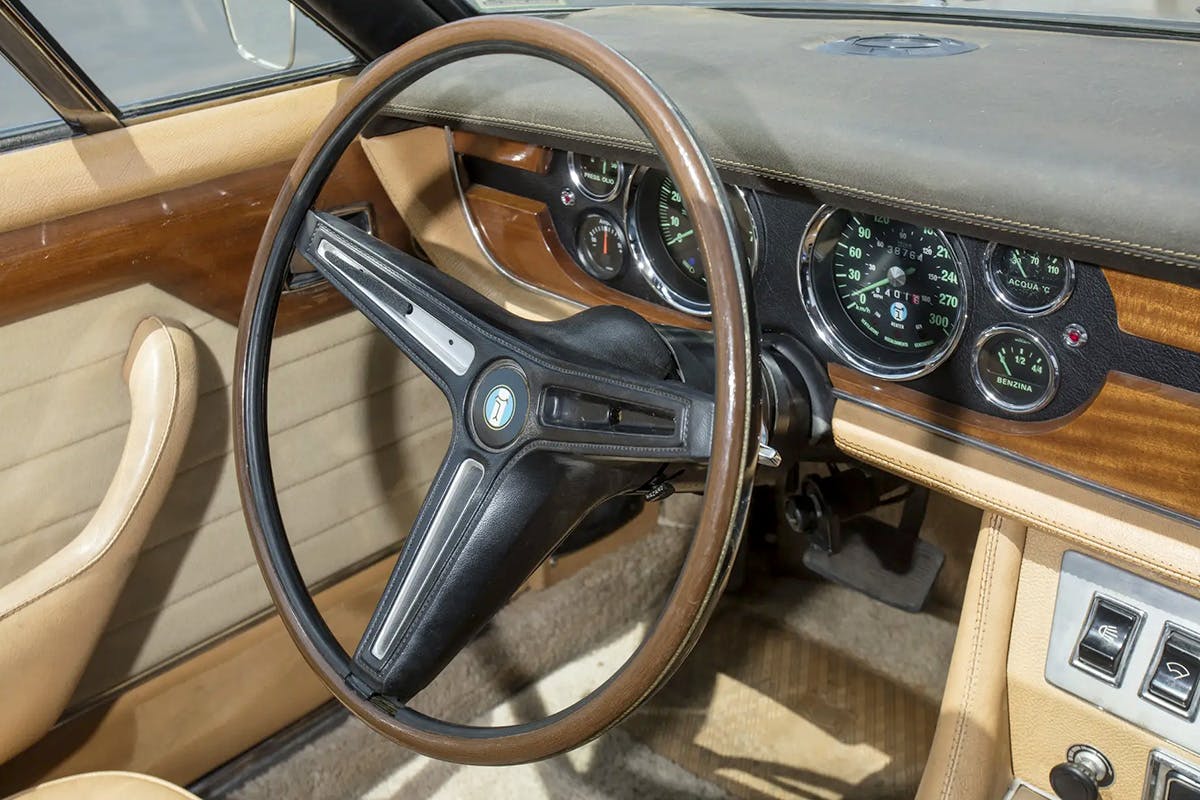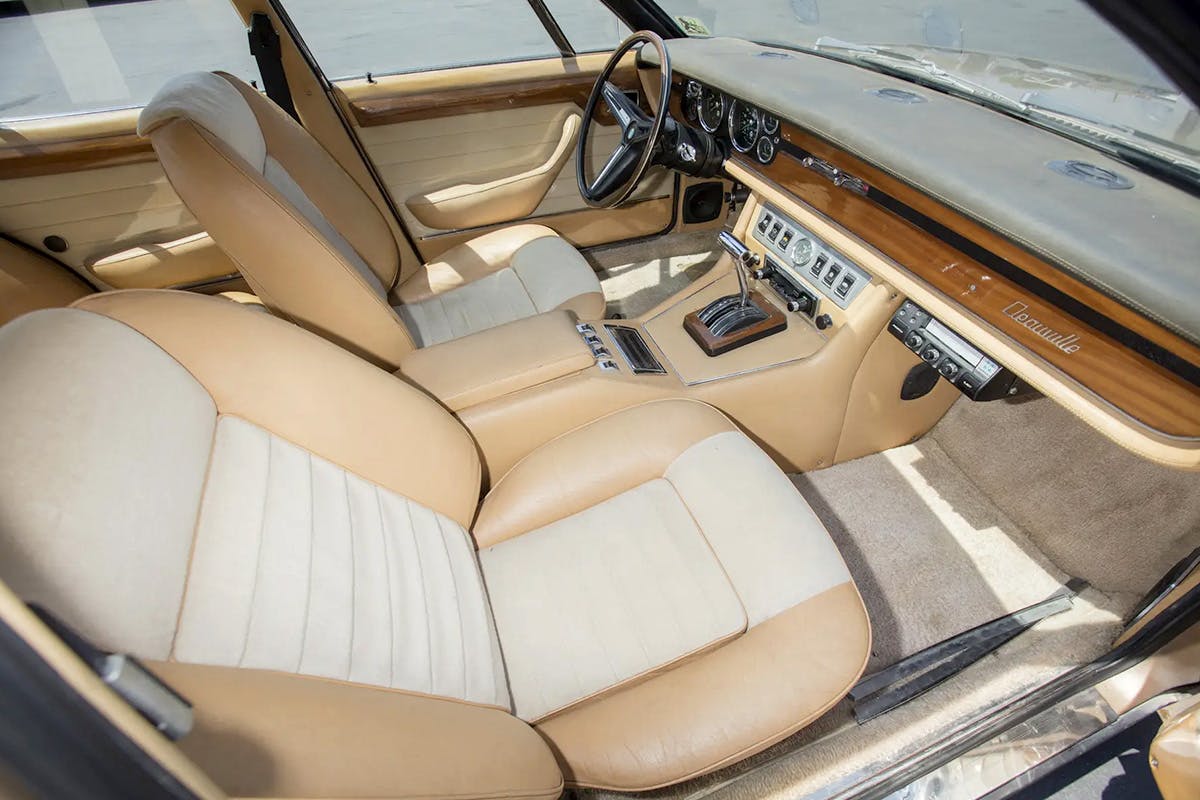When Lee Iacocca and DeTomaso took on Europe’s best sedans
Many people think that DeTomaso was a one-hit wonder, and that the only car the company produced was the Pantera. But not only was there the Vallelunga, which we’ve covered here, there was also the Deauville and the Longchamps.
We’ll save the latter for another day, because this week’s oddball classic is a four-door saloon that looks suspiciously like a Jaguar XJ40, a car which made its debut just as the Deauville’s 15-year production run was coming to an end.
When laying out its case for the Deauville, DeTomaso’s aim was to deliver the world’s most opulent saloon and draw clients away from the luxury big-hitters such as the Jensen Interceptor, Lamborghini Espada, Aston Martin DBS V8, and the Ferrari 365 GTC/4. The Deauville was unique in this company in having a quartet of doors, so that those in the back seats could get in and out more easily. It’s a formula that Monteverdi would follow with its 375 saloon.
The man behind the Deauville was Lee Iacocca, the charismatic Ford boss who had started to work with Alejandro DeTomaso on the Pantera project. During a visit to the design studios, Iacocca got chatting to stylist Tom Tjaarda, making it clear that he was a great fan of the Jaguar XJ.
When he next visited, this time with Henry Ford II, the die was cast for DeTomaso to build its own luxury four-door saloon, which Tjaarda also designed.

Appearing just a few months after the Pantera, the DeTomaso Deauville burst onto the scene in 1970 at the Turin Salon. Both cars used the same Ford-sourced “Cleveland” pushrod cast-iron 5763-cc V-8, which in the Deauville was rated at 275 hp. However, the Pantera’s powerplant was mounted in the middle; the Deauville’s was in its nose. A Ford three-speed Cruise-O-Matic automatic transmission channelled 314 lb-ft of torque to the back wheels—via a Salisbury diff, just as in the XJ6.
There was independent suspension all round, with unequal length wishbones and coil springs up front. At the back there were coil springs and radius arms with lower wishbones, with the driveshafts providing an upper link. The steering was a power-assisted rack-and-pinion setup, while there was a Girling disc brake at each corner.
By 1971 the first press reviews were appearing and the understated DeTomaso was generally well received. As the world’s fastest four-door saloon there was plenty to like in terms of performance, because the Deauville also handled impressively for such a hefty car—it tipped the scales at more than 4188 pounds—while that fully independent suspension ensured a supple ride.
The problem was that this was an eye-wateringly expensive car. It wasn’t as pricy as a Lamborghini or Ferrari, but it was nearly four times as expensive as a Jaguar XJ6. That Brit was swift, refined and supremely comfortable, which made it the ultimate cruiser; several magazines claimed that the XJ was the world’s best car. Nobody ever said that about the Deauville.
Of course, the DeTomaso was perfect for those who wanted to flaunt their wealth, since turning up to a society event in a Jag wasn’t going to draw a crowd. Then again, if you turned up in a Deauville, chances were nobody would have known what it was.
Things got even harder for DeTomaso in 1972, when Jaguar shoehorned its V-12 engine into the XJ’s nose to create the XJ12. Faster and even smoother than the XJ6, the 12-pot saloon cost little more than half as much as DeTomaso’s V-8-powered alternative.
What caused the biggest headache was the arrival of Mercedes’ 450 SEL 6.9 in 1976. Astonishingly fast, superbly built, and significantly more frugal at a time when there were still fuel shortages, the 450 SEL put the writing on the wall for the Deauville.

Ford had lost interest long before ’76. Within months of the car’s unveiling back in 1970, Ford had looked at fitting Maverick running gear to the Deauville, hoping to sell a cheaper variation to American buyers. The plan was to ship bare bodies from Ghia’s factory in Italy to the U.S., where the Maverick engines would be fitted, but when the first body shells arrived in the U.S. and Ford saw how poorly constructed they were, all such notions were abandoned.
Production continued until the mid-’80s, although after 1981 the Deauville was available to special order only. Officially 240 or so Deauvilles were built, but it’s reckoned that half this was closer to the truth because there are so many gaps between cars’ chassis numbers. Whichever way you look at it, the Deauville is now vanishingly rare, with few survivors left.
Check out the Hagerty Media homepage so you don’t miss a single story, or better yet, bookmark it.






I’ve never seen one of these before. I really like it.
Never seen one in person. It does look like a Jag with a weird front end.
I especially like the rust holes.
Good spotting. I think we know why so few have survived!
Fastest saloon in the world? What about the Ford GTHO’s or are they “just sedans”?